What To Eat In Chengdu – LTL’s Top 20 Sichuanese Eats
Are you in Chengdu right now? Then you’ll be faced with one of the most famous cuisines in China. Sichuanese Cuisine!

Do you love trying out new tasty food?
Well, you’re in luck. Sichuanese cuisine has long been known as China’s most beloved regional cuisine, both at home and abroad.
And, as the capital of this food-crazy province, Chengdu itself is chockablock with restaurants serving up the favourite local specialities.
👉 In fact, UNESCO named Chengdu a City of Gastronomy back in 2011.
The entire province is known for its delicious regional delights packed with flavour. If you’re worried about consuming too much MSG though, we dispel a few myths in this blog so you can enjoy the food without worry.
So, on that note, let’s dive in and discover a bit more about Sichuanese cuisine and what makes it so damn good!
Sichuanese Cuisines || How do I find the best Sichuanese Cuisine?
Sichuanese Cuisines || What makes Sichuanese Cuisine so unique?
Sichuanese Cuisines || The Top 20 Sichuanese Eats
Sichuanese Cuisines || FAQs
How do I find the best Sichuanese Cuisine?
Locals and long-term expats here would both agree that the real culinary gems are found in the unlikeliest of places.
There’s a local phrase 苍蝇馆子 (Cāngyíng guǎnzi), which literally translated, means “fly restaurant”. Perhaps the less you think about the literal meaning of the Chinese name, the better, in this case.
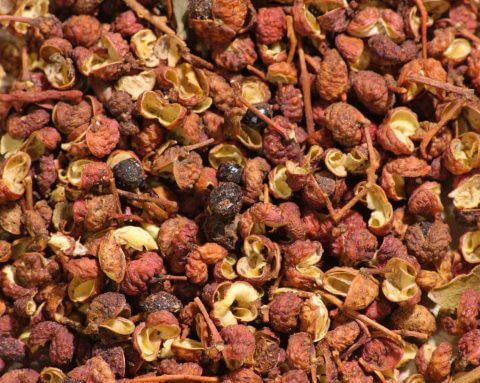
To be straight, I’m not talking about glitzy Michelin star hotel bistros.
Instead, these are literal hole-in-the-wall restaurants, run by families, and consisting of a scattering of plastic tables and stools on the pavement, under a large awning, or in an garage-style seating area. (Who needs doors anyway?)
The majority tend to specialise in either spicy noodle and wonton dishes for solo diners, or traditional home-style fare for sharing with friends.
A really good “fly restaurant” can be identified by the impatient crowd of people hanging around outside, waiting for a table.
If you want the unforgettable taste of authentic Sichuanese Dan Dan Noodles or Twice-Cooked Pork, avoid the tourist areas and hit the back streets. You won’t find many fly restaurants left in the central shopping and business districts of Chengdu, as they now only survive in quieter residential areas.

Chengdu Street Food – 5 Must-Try Street Foods in Chengdu
Street Food in Chengdu – Five Top Foods That Aren’t to Be Missed Chengdu Street Food – oh it’s good! It’s so, so good! Sichuan province is famous for its food, it is the home of the comforting hotpot, after…
What Makes Sichuanese Cuisine So Unique?
Ask someone this question on the streets of New York or London, and you’re likely to hear something along the lines of “It’s proper spicy”,
“They add in lots of red chilli, right?” or “Do you mean Sichuan hot pot?”.
And yes, the burn of red-hot fiery chilli peppers will feature a LOT in our list of the Top 20 Sichuanese eats.
The spicy-factor in the local cuisine is likely to do with the warm, foggy and humid climate across much of Sichuan province.
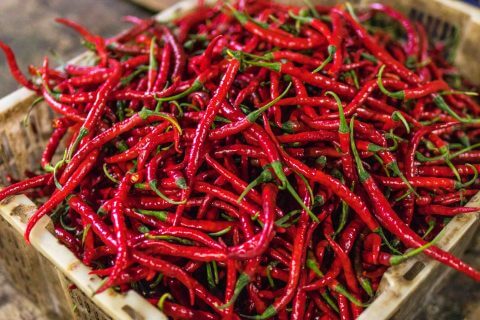
According to traditional Chinese medicine, dampness in the air causes certain imbalances in the body.
To restore balance, moisture must be driven out by eating more foods that are “heating” in nature. And yes, you’ve guessed it, red chillies are one of those foods.
But the red-hot lajiao has a mouth-tingling partner-in-crime in these parts: the native Sichuan peppercorn.
The small but mighty Sichuan peppercorn (花椒 huā jiāo) is surely the MVP in Sichuanese cuisine.
花椒 huā jiāo is literally translated as ‘flowering peppercorn’. Technically, though, it’s not even related to the humble black peppercorn.
These little balls of joy are actually the dried seeds of a tree in the citrus family, and their purpose in life is to make your mouth tingle and your tongue go numb.
The Chinese call this unusual sensation麻辣 má là (numbing spice).
There are some key ingredients in Sichuanese cuisine:

- Sichuan peppercorn
- Chilli Oil
- Dried Chillies
- Chilli Flakes (do you get the idea yet?)
- Ginger
- Star Anise
- Garlic
- Fermented black beans
- Peanuts
- Sesame seeds
- Cilantro / Coriander
- Scallions / Spring Onions
So, without further ado, here’s LTL’s guide to must-eats in and around the city of Chengdu:
- Hot pot and its relatives
- Favourites for a quick lunch
- Home-style dishes for sharing with friends
- Snacks for in-between


Hot Pot and its Relatives
Every blog about Sichuanese cuisine must start with hot pot. It’s the law.
Top Tip: For those of you still getting used to the spice levels in Chengdu cuisine, ask for your dish to be 微辣 “wēi là”, meaning “(only) slightly spicy”. In many larger hot pot restaurants, you can also request a “Yin and Yang” pot, where one half of the hot pot is sectioned off for a non-spicy broth.
Still too spicy? Try adding plenty of vinegar into your side dip, and ordering a tried-and-tested spice neutraliser to drink on the side: natural yoghurt, or local favourite, a cold can of 王老吉凉茶 (Wáng Lǎo Jí Liáng Chá, a kind of herbal tea).
#1 Sichuanese Hot Pot 四川火锅 (Sìchuān Huǒguō)
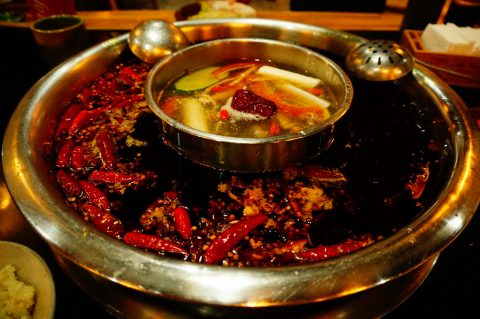
What could be better on a chilly Chengdu night than gathering around a bubbling pot of fiery goodness with friends – until you’re all literally sweating out the chilli oil?
This dish is such a classic, it even made it into our countdown of the Top Five Traditional Dishes in China.
Order your raw dishes (potato slices, bamboo shoots, tender beef, silken tofu, pig’s brain… you name it, they probably have it on the menu) and drop each piece into the pot in turn.
Watch in fascination as it glistens and shimmers in the red-hot soup of chilli, ginger, cloves and star anise, cooking before your eyes.
Now for the tricky bit – fish that piece out again with those extra-long hot pot chopsticks – and enjoy!
Where To Find It: The question here is where CAN’T you find hot pot in Chengdu? There’s a hot pot restaurant on every corner of every street here.
But if you’re looking for the five-star hot-pot experience (complete with Sichuan Opera performances every evening), then it’s worth forking out a few extra yuan for a table at a branch of 皇城老妈火锅 (Huang Cheng Lao Ma Hot Pot).
#2 Chuan Chuan 串串
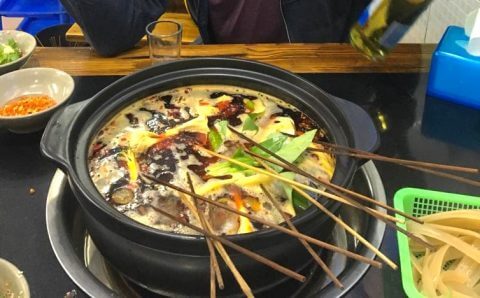
A relatively modern twist on the age-old hot pot tradition, Chuan Chuan is basically a cheaper and easier alternative to your typical hot pot restaurant.
Instead of relying on waiting staff to bring over your raw dishes on plates, you pick them out yourself from fridges stationed around the room.
You will often only pay 1-2 yuan per skewer, which is astoundingly good value in comparison to the more luxurious, tourist-oriented hot pot chains.
Skewers are simply tallied up at the end of your meal, and added to the base price of the hot pot, so you can eat as much or as little as you like.
Where To Find It: Chuan Chuan can be found in most residential areas of Chengdu, away from the touristy areas of TianFu Square, ChunXi Road and Wide & Narrow Alleys. Look out for neon characters saying 串串!
PS – if you are in Shanghai you should check out our guide to Chuan in Shanghai.
#3 Hot Pot Style Stew 冒菜 (Mào Cài)
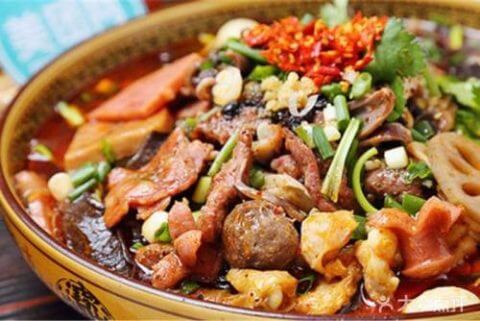
You’ll find much the same raw ingredients in the fridges of a Mao Cai restaurant as on a hot pot menu: fresh green vegetables, various types of tofu, mushrooms, quails’ eggs, uncooked noodles and slices of raw fish, poultry, pork and beef.
Grab a bowl from the counter – one for veggies, the other for meat/eggs – and take as much or as little as you fancy.
Your bowls will be weighed to work out how much you owe, and they’ll ask you whether you want your food to be cooked in mildly spicy stew (微辣), moderately spicy stew(中辣)or very spicy stew (特辣).
Your hot-pot style stewed meats and veggies will then be brought to your table within ten minutes, served with a generous portion of white rice. Perfect for a quick lunch!
Where To Find It: Any part of town where office workers are likely hang out!
#4 Dry Hot Pot 麻辣香锅 (Málà Xiāngguō)
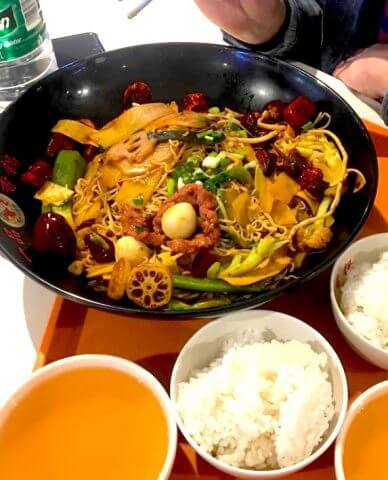
This, without a doubt, is my go-to dish when out shopping with friends in downtown Chengdu.
Do you want the tingle and spice of hot pot, but without the stress of accidentally dripping chilli oil all down your nice white top?
麻辣香锅 is your answer.
It’s got all the hot pot flavours, but dry, without the soup.
Lotus root is a must here, by the way, if you haven’t tried it before – its crunchy texture works really well in this dish.
Where To Find It: A favourite in shopping mall food courts all over Chengdu, and indeed, all over China.
Favourites for a quick lunch:
First off, a note on noodles and dumpling portion sizes in Chengdu:
Noodles, dumplings and wontons (locally known as 抄手 chāoshǒu) are served in sizes of liǎng (两)in Chengdu, roughly equivalent to 50 grams. You can usually order either one, two, or three liǎng of your favourite dish from the menu – or for the gluttons, even four liǎng on request!
#5 Dan Dan Noodles 担担面 (Dàndan Miàn)
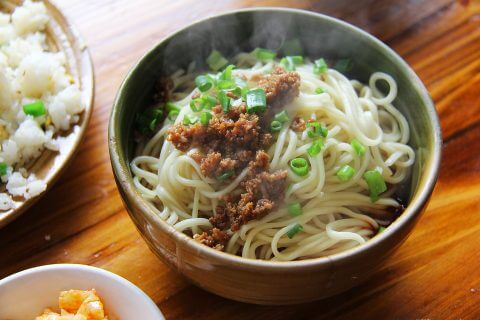
The best things in life are simple.
Fresh, hot noodles with a splash of black vinegar, soy sauce, chilli, ground Sichuan peppercorns and garlic – then topped with ground pork and scallions. To die for.
The name of this Chengdu speciality comes from the shoulder pole (担)that walking vendors once used when selling the noodles in the streets of Chengdu.
On each end of the bamboo pole was a basket – one for the noodles, the other for the sauce.
Where To Eat It: The most famous Dan Dan Noodles in downtown Chengdu are undoubtedly at Chunyangguan (纯阳馆鱼香排骨面). This is a small, simple ‘fly restaurant’ on a quiet street a few minutes’ walk from Wide & Narrow Alleys. Get two liang of the good stuff here for just 10 yuan.
#6 Mixed Sauce Noodles 杂酱面 (Zájiàngmiàn)
Not to be confused with 炸酱面 (zhájiàngmiàn), a famous dish in Beijing and northern China (which literally translates as “fried sauce noodles” rather than “mixed sauce noodles”).
This popular Sichuanese dish has all the classic components. There’s homemade noodles, ground pork, spring onions, and of course a sauce flavoured with chilli flakes and Sichuan peppercorn.
Some restaurants will serve the noodles with a fried egg on top as standard – at others, it’s an optional add-on.
Where To Eat It: This dish is a favourite in small fly-restaurants near university campuses and office blocks.
Ever been to Taiwan? They have their own cuisine there also!

Travel Sichuan 🧳 7 (Sublime) Hidden Gems to Discover Outside of Chengdu
When you go to travel Sichuan, you are in for a great adventure. Here are 7 spots we think you simply have to visit when you come to Sichuan.
#7 Yibin-style Noodles 宜宾燃面 (Yíbīn Ránmiàn)
This noodle dish originated in Yibin, a city in south-western Sichuan Province just a few hours’ drive from Chengdu.
Yibin-style noodles are less spicy than the other noodle dishes on this list. The main flavour comes from the pickled vegetables and peanuts that are sprinkled generously on top.
Make sure you mix in the sauce well before you tuck in, to coat each noodle with delicious, crunchy peanuts.
Where To Eat It: There are countless Yibin-speciality restaurants on the streets of Chengdu, and this dish is often top of the menu. Portion sizes tend to be generous!
#8 Chilli Oil Wontons 红油抄手 (Hóngyóu Chāoshǒu)
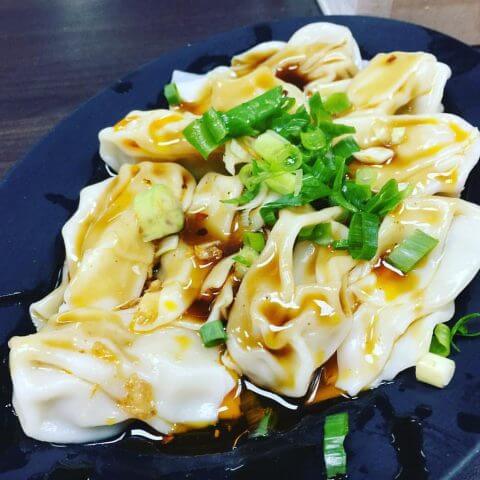
It must be said, these are difficult to eat without making a mess – don’t choose them if you’re on a first date.
They’re also probably not the healthiest dish on our list.
But they ARE delicious and satisfying.
Fresh, plump meat wontons bathing in a bright red soup of chilli oil. Mmmm.
Where To Eat It: Most dumpling restaurants in Chengdu will also serve chilli-oil wontons.
Now let’s take a look at some different kinds of Sichuanese Cuisine
Home-style dishes for dinner with friends
#9 Salt Fried Pork 盐煎肉 (Yán Jiān Ròu)
Like the Yibin noodles, this dish is a good choice if you’re not too keen on spice. Or if just want a break from all the fire-breathing!
Crispy, salted pork slices served up with green garlic sprouts.
You really can’t go wrong.
Where To Eat It: This dish is a regular on most home-style (家常菜 jiāchángcài) restaurants’ menus in Chengdu.
#10 Spicy dried green beans 干煸四季豆 (Gān biān sìjì dòu)
We should all be eating more vegetables, right?
To make this dish, green beans are stir-fried with red chilli and Sichuan peppercorn on a high heat, until they smoke, shrivel and dehydrate.
Where To Eat It: This dish is a regular on most home-style (家常菜 jiāchángcài) restaurants’ menus in Chengdu.
#11 Chongqing Spicy Chicken 重庆辣子鸡 (Chóngqìng Làzǐ Jī)
Chongqing was part of Sichuan province until 1997, so it comes as no surprise that the city’s local cuisine follows Sichuanese traditions.
And by now, we all know what that means – heaps of red chilli, a handful of Sichuan peppercorn and some garlic for good measure.
Eating Chongqing Spicy Chicken is all about using your chopsticks to dig around and find the fried chicken among the mountain of dried chillies.
It’s sure better than KFC.
Where To Eat It: Also a regular on most home-style (家常菜 jiāchángcài) restaurants’ menus in Chengdu.
#12 Pock-marked Grandma’s Tofu 麻婆豆腐 (Mápó Dòufu)
Despite its rather odd name, this is one of those Sichuanese dishes whose popularity has spread beyond the province.
You’ll find variations of it in pretty much any town or city across China.
Cubes of silken tofu (beancurd) are coated in a bowl of spicy, aromatic sauce – usually made up of fermented bean paste, minced beef, spring onion, and of course the dastardly duo: chilli pepper and Sichuan peppercorn.
The tofu is served soft and crumbly, so you’ll want to order some rice on the side.
Where To Eat It: Nearly every home-style (家常菜 jiāchángcài) restaurant in Chengdu and beyond.
#13 Kung Pao Chicken 宫保鸡丁 (Gōng Bǎo Jī Dīng)

Kung Pao Chicken, as its known in the West, appears on the menus of Chinese restaurants around the world.
But did you know how the dish got its name?
The combination of marinated chicken, crunchy peanuts and bright red chillies was apparently very popular with a certain Ding Baozhen, who was a governor of Sichuan province in the late Qing Dynasty (late 1800s).
His official title was 宫保 Gōng Bǎo, or “Defender of the Imperial Palace”, which is where the Mandarin name comes from.
Kung Pao Chicken is one of those dishes that tastes as good as it looks. Classic sweet and sour sauce is upgraded with a hint of Sichuan peppercorn to make your lips tingle.
Where To Eat It: Nearly every home-style (家常菜 jiāchángcài) restaurant in Chengdu and beyond.

Chengdu Weather Guide: Climate, Seasons, and Best Times to Visit
What to Expect from Chengdu Weather Throughout the Year || PLUS Weather-Related Vocab Chengdu, the capital of Sichuan province, is known for its rich history, stunning landscapes, and, of course, its iconic pandas. 🐼 But before you pack your bags,…
#14 Twice-Cooked Pork 回锅肉 (huí guō ròu)
The name gives it away here.
Pork belly is first simmered in a salty broth, before being chopped up into slices, and stir-fried with spices and green vegetables.
The resulting dish can be a bit fatty in some restaurants (I tend to order the closely-related Salt-Fried Pork more often). But when it’s done well, it’s simply delicious.
Where To Eat It: Also a regular on most home-style (家常菜 jiāchángcài) restaurants’ menus in Chengdu.
Snacks for in-between
#15 Guo Kui 锅盔 (Guō Kuī)
China’s answer to the sausage roll. But far superior!
A classic Chengdu Guo Kui is cooked without red chilli flavourings. But to make up for that, plenty of crushed Sichuan peppercorns are added to the filling instead.
First, dough is rolled out into long rectangular strips.
Then, peppery meat paste is spread all over one side – you can usually choose between beef or pork. Next, each strip is rolled back up again (like a cinnamon roll!), before being fried in oil.
Guo Kui are definitely best eaten fresh, when they’re still hot, crispy and flaky.
You’ll be back for more!
Where To Eat It: You’ll find these glorious wheels of pastry and meat in most street-food alleyways – they’re cooked on site and displayed in metal cases at eye-level.

Learn Sichuanese // My Journey Learning The Chengdu Dialect
Being a confident speaker in a few Chinese dialects my next challenge is to learn Sichuanese. Find out my thoughts & tips on studying the Chengdu dialect.
#16 Spicy Rabbit Head 麻辣兔子头 (Málà Tùzǐ Tóu)
For the more adventurous foodies out there, spicy rabbit heads are a big thing in Chengdu. They’re mainly popular as a late-evening snack, when crowds are spilling out of the bars near Jiuyan bridge.
They’re messy and awkward to eat, mind you.
You may want to put on the disposable plastic gloves that come with your order!
Where To Eat It: Usually found near nightlife hotspots, such as around university campuses or the riverside bars of Jiuyan bridge.
#17 Chongqing Hot & Spicy Noodles 重庆麻辣小面 (Chóngqìng Málà Xiǎo Miàn)
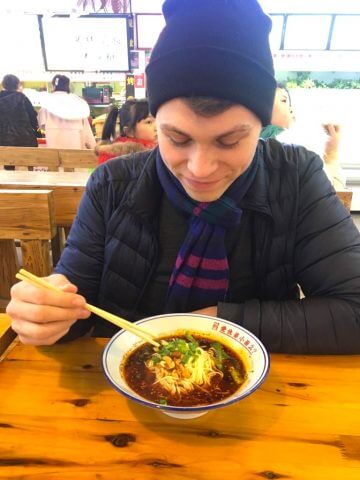
What, you’ve never had noodles for breakfast?
That’s about to change.
On a chilly Chengdu morning, you could do much worse than eat a steaming bowl of Chongqing noodles.
This is the traditional breakfast food of Chongqing – a megacity in southern China, which was part of Sichuan province until 1997.
You can find a bowl of these simple noodles for less than 5 yuan in most parts of the city!
Where To Eat It: There are lots of Chongqing home-style noodle joints around Chengdu, but otherwise, try the food courts in Wide and Narrow Alleys.
#18 Danhonggao Crepes 但烘糕 (Dàn Hōng Gāo)
Basically, these are mini pancakes stuffed with any filling imaginable.
Some street carts will specialise in savoury accompaniments, such as pork floss and vegetables, and others in sweet alternatives, such as black sesame and cream.
Most will offer both. Try both!
Where To Eat It: Since these crepes are almost always served from mobile street carts, your best bet is to look out for one at your local fruit and vegetable market.
#19 Sweet and Sticky Rice Balls 糖油果子 (Tángyóu Guǒzi)
These are perfect for an after-dinner snack.
Sweet and sticky rice balls are fried, and then coated in dark brown sweet molasses and sesame seeds.
They are then served up to the hungry customers with five balls per skewer. If eaten fresh, they’re wonderfully crispy on the outside, and soft and gooey on the inside!
The trick is to watch out for a queue forming next to a 糖油果子 stall – that means a new batch is about to be fried and skewered.
Where To Eat It: There is a famous vendor opposite Nu Space cafe on the Huaxing Food Street, near to People’s Park.
and one local delicacy you should avoid…
#20 Chilli Sauce Ice Cream 辣椒红油冰淇淋 (Làjiāo Hóngyóu Bīngqílín)

Some foods are just a gimmick, designed to attract attention on a bustling street-food alleyway.
This is one of them.
By all means, hand over a couple of yuan to try chilli sauce ice cream out for yourself.
But don’t say I didn’t warn you!
There it is, the complete guide to Sichuanese cuisine, bookmark this and tick them off as you go! See, it isn’t all about Beiijng Duck and Dumplings!
Missed any of your favourites out? Let us know in the comments and we’ll add them to our ever growing list of Chengdu delights!
Sichuanese Cuisine – FAQ’s
Where is Sichuan?
Sichuan is a province in the southwestern part of China. Chengdu is the capital city of the province. It’s known for its punchy food filled with spicy flavours.
What is a typical Sichuan dish?
Sichuan is probably most famed for its chilli-filled hotpot. In Chinese this is known as 四川火锅 Sìchuān huǒguō.
Is Sichuanese cuisine spicy?
Yes! The burn of red-hot fiery chilli peppers will feature a LOT in the cuisine of Sichuan.
Is all food in Chengdu spicy?
A good deal of the food in Chengdu is spicy. But don’t worry those of you who can’t handle the heat, there’s still plenty of dishes for you to feast on in Chengdu!
Is there a lot of street food in Chengdu?
There is indeed! There are a wealth of street food options in Chengdu!
Want more from LTL?
If you wish to hear more from LTL Mandarin School why not join our mailing list? We give plenty of handy information on learning Chinese, useful apps to learn the language and everything going on at our LTL schools!
Sign up below and become part of our ever-growing community!
BONUS || Want to study Chinese with us in Chengdu? Why not check out our group courses or individual Chinese classes.

 Hi, my name is Sabatino. I am from Italy and I am a Student Advisor at LTL. Fancy coming to study with us in China?
Hi, my name is Sabatino. I am from Italy and I am a Student Advisor at LTL. Fancy coming to study with us in China? Hi, my name is Mojca. I am from Slovenia in Europe and I work as a student advisor at our Chengdu school.
Hi, my name is Mojca. I am from Slovenia in Europe and I work as a student advisor at our Chengdu school.



10 comments
Great article! Will be joining your free online classes!
Wonderful to hear! Enjoy them Edith.
LTL
Ahhh 担担面 brings back so many memories! Love those noodles, nice nostaglic read!
We are super happy this brought back some great memories for you Trev. Maybe we'll meet you soon again in China...!
[…] didn’t know there are many different types of hotpot but two major types: Beijing hotpot and Sichuan […]
[…] (so obviously, you need to eat fish for these) and fish in their dishes and you can find a lot of spicy veggie dishes in Sichuan province, for […]
Too spicy for me!
Can relate to this!
Great food!
Sooooo good!